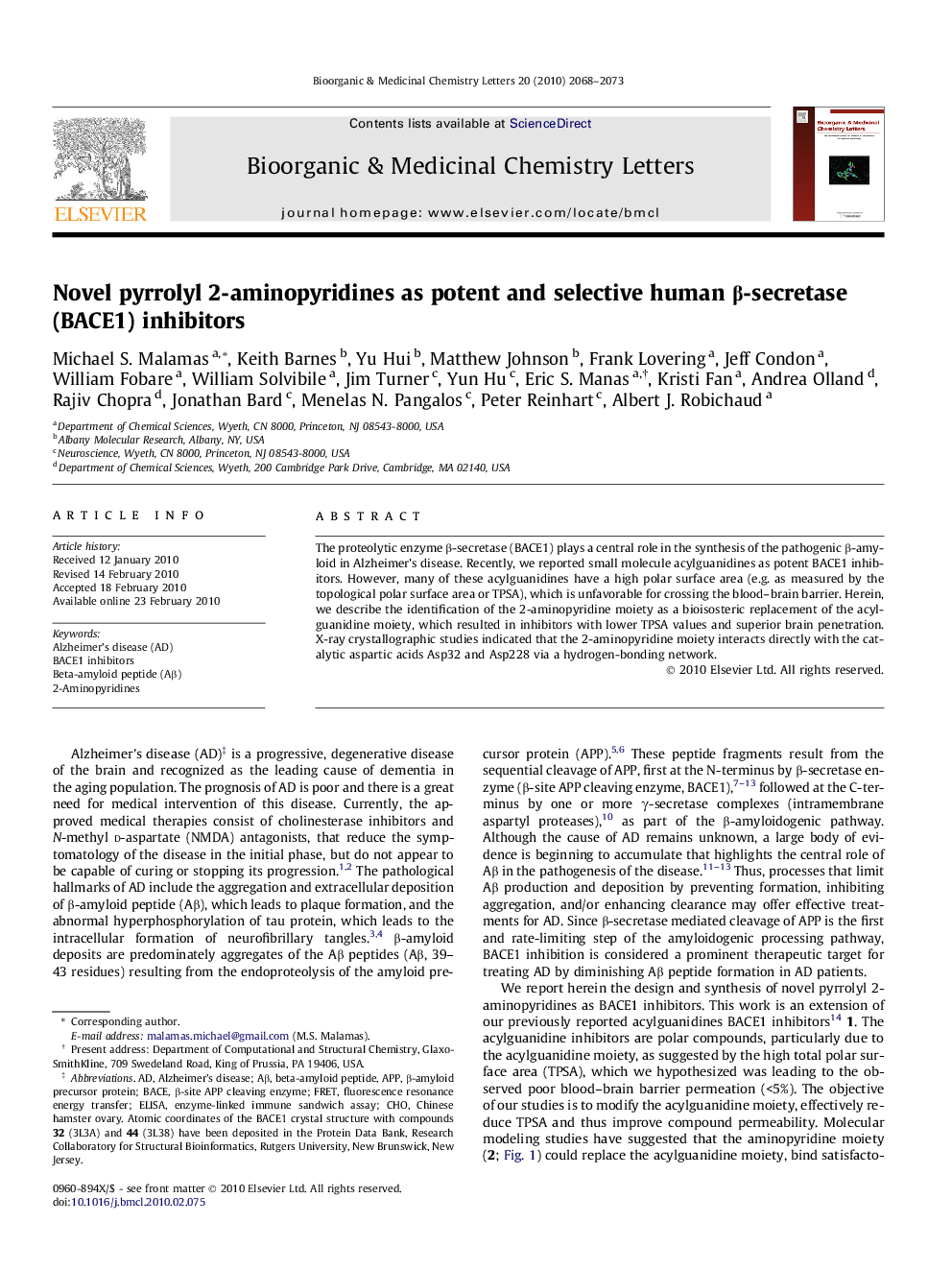| Article ID | Journal | Published Year | Pages | File Type |
|---|---|---|---|---|
| 1374526 | Bioorganic & Medicinal Chemistry Letters | 2010 | 6 Pages |
The proteolytic enzyme β-secretase (BACE1) plays a central role in the synthesis of the pathogenic β-amyloid in Alzheimer’s disease. Recently, we reported small molecule acylguanidines as potent BACE1 inhibitors. However, many of these acylguanidines have a high polar surface area (e.g. as measured by the topological polar surface area or TPSA), which is unfavorable for crossing the blood–brain barrier. Herein, we describe the identification of the 2-aminopyridine moiety as a bioisosteric replacement of the acylguanidine moiety, which resulted in inhibitors with lower TPSA values and superior brain penetration. X-ray crystallographic studies indicated that the 2-aminopyridine moiety interacts directly with the catalytic aspartic acids Asp32 and Asp228 via a hydrogen-bonding network.
Graphical abstractThe 2-aminopyridine moiety is a bioisosteric replacement of the acylguanidine moiety with a lower Topological Polar Surface Area (TPSA) value and superior brain penetration.Figure optionsDownload full-size imageDownload as PowerPoint slide
